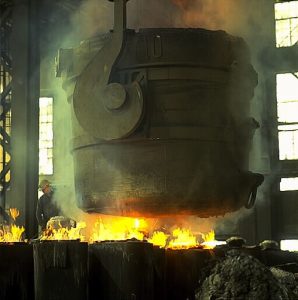 Carbon steel is a popular metal alloy used in dozens of different real-world applications, including manufacturing. It’s characterized by the use of a main alloy constituent being carbon, of which the metal is comprised of roughly 0.12 to 2%.
Carbon steel is a popular metal alloy used in dozens of different real-world applications, including manufacturing. It’s characterized by the use of a main alloy constituent being carbon, of which the metal is comprised of roughly 0.12 to 2%.
The American Iron and Steel Institute further elaborated on the defining, saying carbon steel has no minimum requirements for chromium, cobalt, molybdenum, nickel, niobium, titanium, tungsten, vanadium or zirconium, or any other element to be added to obtain a desired alloying effect; the minimum for copper is less than 0.40%; and the maximum concentration does not exceed 1.65 for manganese; 0.60 for silicon; and 0.60 for copper.
So, what benefits (if any) are there to using to carbon steel? Like most alloy metals, there’s a good reason why carbon is added to steel: it improves its characteristics, making it more attractive for use in a wide variety of applications. Carbon steel, for instance, makes steel stronger and harder. During the production of carbon steel, the metal alloy is exposed to high temperatures in a process known as heat treating. This makes it significantly stronger, allowing the carbon steel to withstand extreme force without succumbing to damage.
It’s important to note, however, that carbon steel does have some disadvantages, such as its reduced weldability. Conventional wisdom should lead you to believe that weaker metals are easier to weld, which generally holds true in most cases, and carbon steel is no exception. Because it’s stronger and more durable than traditional steel and stainless steel, you may have trouble welding it. Furthermore, the heat treatment process lowers the melting point for carbon steel, meaning it takes even hotter temperatures to weld.
Of course, there are several different types of carbon steel, each of which has its own respective metal concentrations and characteristics. Some of the most common carbon steel types include low-carbon steel (0.05-0.25% carbon); medium-carbon steel (0.3-0.6% carbon); high-carbon steel (0.7%-2.5% carbon); and ultra-high carbon steel (2.5-3%). Not surprisingly, ultra-high carbon steel is the strongest carbon steel on the market, with companies using it to produce knives, car axles and other automotive parts. It’s usually made with powder metallurgy for enhanced strength and durability.
Hopefully, this will give you a better understanding of carbon steel and how it’s used in the manufacturing industry.
